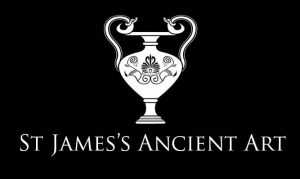As with many ancient societies, jewellery was an important social marker, used to demonstrate wealth and richness. In Ancient Greek culture, jewellery was worn in everyday life but was also buried with the deceased as part of his or her funerary outfit. Jewellery might have been enriched by precious and semi-precious stones and decorative motives would have included popular myths, gods, goddesses, and heroes. Jewellery such as this beautiful miniature pendant was crafted and intended for everyday use, instead of being destined exclusively to a funerary purpose.
In Ancient Greek mythology, the pomegranate was a symbol of abundance, fecundity and prosperity. Hades was known to have given pomegranate seeds to his lover Persephone, as a token of safety, while she was leaving the underworld to join her mother Demeter in the human world. The pomegranate became also a symbol of the indissolubility of marriage, hence they were used not only as a decorative motif on jewellery, but also on terracotta artefacts and vessels.







